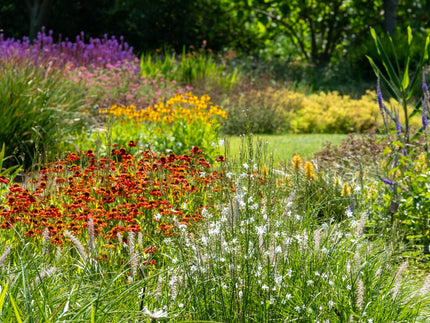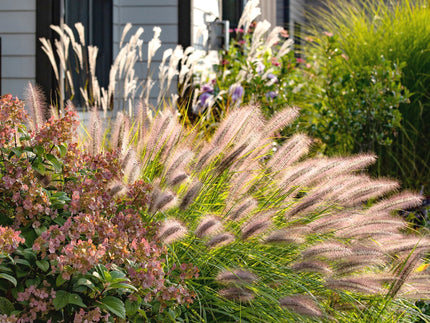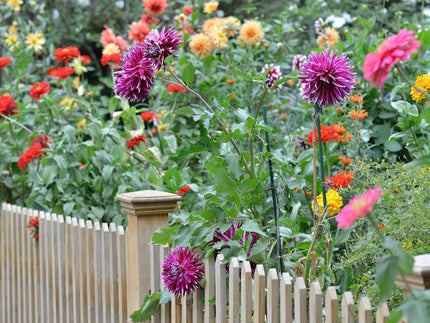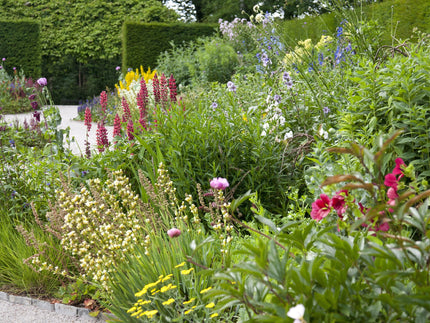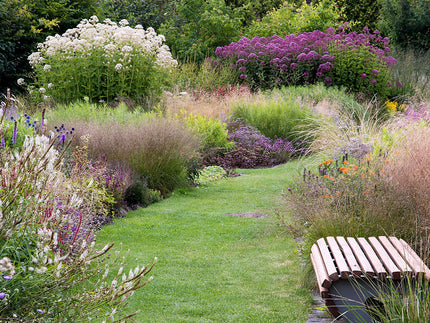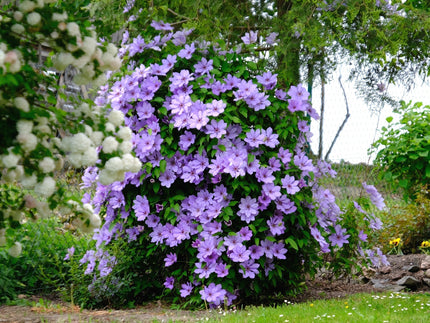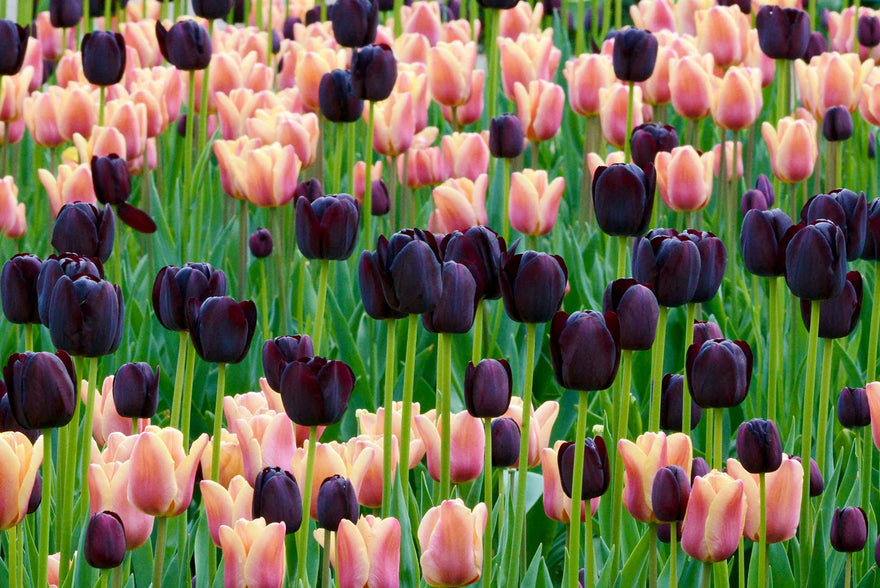
Do black tulips exist?
Do black tulips really exist, or is it just a myth? While the idea of a perfectly black tulip flower might seem captivating, the reality is a little more complex. Black tulips, as we often picture them, don’t have petals that are pure black. Instead, they come in deep, rich shades of purple, maroon, and burgundy, which can appear almost black, especially under certain lighting. So, while they might not be "black" in the strictest sense, these dark and dramatic blooms are as close as nature can get to that elusive, mysterious hue. Let’s take a closer look at black tulips, their intriguing history, the varieties you can grow in the UK, and why these captivating flowers continue to fascinate gardeners worldwide.
What are black tulips?
First things first—what exactly are black tulips? While we tend to use the term "black" to describe them, these flowers are technically deep, dark shades of purple or burgundy. Their rich, velvety tones can appear almost black, particularly when they’re bathed in low light or the shadow of a setting sun. This gives them a mysterious and elegant air, making them one of the most sought-after tulip varieties.
In the UK, black tulips have become a popular choice for gardeners looking to add a touch of sophistication and drama to their spring garden. They’re often used to create a striking contrast with lighter, more vibrant flowers or as part of a modern or contemporary garden design. Despite their bold appearance, black tulips are surprisingly versatile and can complement a wide range of other plants and garden styles.

Do black tulips exist in nature?
While it’s easy to imagine a flower with true black petals, such a flower doesn’t naturally occur. Instead, the deep, dark colours we associate with black tulips are the result of careful breeding and hybridisation over time. The quest to create the perfect "black" tulip has been ongoing for centuries, with many varieties now available that come close to that near-black colour we covet.
Historically, tulips have been bred for their wide range of colours, and the development of dark tulips began in earnest in the 17th century when tulips were first introduced to Europe. Through selective breeding, tulips in shades of deep purple, maroon, and burgundy were developed. These deep hues, especially when planted in large groups, create the illusion of black flowers, and today, black tulips are among the most coveted in gardens across the world.
Key black tulip varieties
There are several varieties of black tulips available, each offering a slightly different take on the concept of a "black" flower. Below, we’ll take a closer look at some of the most popular varieties you can plant in the UK, each one bringing something unique to your garden.
1. Tulip 'Queen of Night'
Known as one of the best examples of a dark tulip, Tulip 'Queen of Night' features stunning, deep purple flowers that often appear almost black. With large, elegant blooms and strong, sturdy stems, this variety is perfect for adding a regal touch to any garden. Standing at about 50 cm, 'Queen of Night' tulips make a striking statement, especially when planted in groups. Their deep colour creates a dramatic contrast against lighter blooms, such as white or pale pink tulips, and works beautifully in both formal and naturalistic gardens.

This variety is especially effective when planted in large swaths or as part of a spring display that includes other dark hues or bright, contrasting colours. 'Queen of Night' is a fantastic option for gardeners looking to create a sophisticated and modern garden that is still grounded in classic elegance.
2. Tulip 'Nightmare'
If you’re looking for a tulip with even more drama, Tulip 'Nightmare' is a perfect choice. This variety features large, deep purple flowers with a darker, almost black appearance, especially when the petals are fully open. The most striking feature of 'Nightmare', however, is the black top of the stem, which adds a unique and bold element to its already dramatic presence. With their frilled edges, these blooms add an element of texture to the dark tulip family. Standing at about 45 cm, 'Nightmare' tulips offer a gothic, moody aesthetic that’s perfect for creating a striking focal point in your garden.

'Nightmare' tulips are ideal for contemporary garden designs, where their bold colour can be paired with modern features like metallic planters or dark stone pathways. They’re also a great choice for creating a slightly mysterious, romantic look, especially when combined with other dark-coloured plants or early spring flowers.
3. Tulip 'Black Hero'
Tulip 'Black Hero' is a striking, double-flowering tulip known for its velvety, deep purple petals that give the impression of pure black, especially when in full bloom. The multiple layers of petals form a lush, rounded bloom that appears full and dramatic. Standing at around 45 cm, this variety adds an elegant, yet bold presence to any garden.

The deep colour of 'Black Hero' works wonderfully when paired with lighter blooms, creating a striking contrast. Its double flowers make it an exceptional choice for planting in clusters or as part of mixed borders, where its sophisticated and luxurious look can really shine. Whether in a modern garden or a more traditional setting, 'Black Hero' offers an impressive, long-lasting display.
4. Tulip 'Black Parrot'
For a more textured and unique variety, Tulip 'Black Parrot' offers a dramatic option with its fringed, ruffled petals. The deep purple colour, tinged with shades of dark red, creates an almost black appearance, while the parrot-like fringing adds a touch of whimsy. The flowers are larger and more dramatic than traditional tulip blooms, making them stand out in any garden. Standing at about 50 cm, 'Black Parrot' is a true showstopper in any spring garden.

This variety works well in gardens that feature a mixture of textures, such as contemporary or wildflower gardens, where its unique shape and dark colour can truly shine. It's perfect for those looking to add an element of drama and excitement to their flower beds or as a statement plant in containers.
Growing black tulips in the UK
Tulips are relatively easy to grow in the UK, and black tulips are no exception. The key to successful tulip growth is planting them in well-drained soil in a sunny location. These bulbs should be planted in the autumn, around 10-15 cm deep and spaced about 10 cm apart. Well-drained soil is essential to prevent waterlogging, which can cause the bulbs to rot.
While black tulips are fairly hardy, it’s best to plant them in a spot where they will receive plenty of sunlight. Once planted, tulips require minimal care, but they do benefit from being watered thoroughly during their growing season. After flowering, it’s important to deadhead the blooms to encourage healthy bulb growth for the following season.
If you're in an area with particularly harsh winters, consider lifting the bulbs and storing them in a cool, dry place to protect them from freezing temperatures. Alternatively, adding a layer of mulch can help keep the bulbs insulated through the winter months.
When do black tulips bloom?
Black tulips generally bloom in early to mid-spring, depending on the variety and weather conditions. Most black tulips, including the varieties mentioned, will bloom from March to April. The blooms are often at their peak in late spring, providing a stunning visual display when paired with other early-spring flowers.
These tulips are ideal for mixing with other tulips in various shades, as their dark tones make a wonderful contrast against lighter flowers. They also pair well with early-flowering perennials, such as hellebores or primroses, to create a visually dynamic garden.

How to use black tulips in your garden
Black tulips are a fantastic way to add drama and elegance to your garden. They work beautifully when planted in groups to create a striking focal point. Planting them in clusters allows their deep colour to truly stand out and creates an almost otherworldly effect, especially when the blooms are fully open.
Alternatively, you can plant black tulips alongside lighter-toned flowers, such as white, pink, or yellow varieties, to create a stark, eye-catching contrast. Their dark tones can also be complemented by silvery foliage plants like lamb’s ears or dusty miller, which will enhance the richness of the blooms. Black tulips are also perfect for modern gardens, where they can be paired with contemporary materials like stone, metal, or glass.
For a more whimsical or romantic garden, consider pairing black tulips with other deep-coloured plants, such as dark-purple pansies or burgundy hellebores, to create a moody, enchanting atmosphere.
Conclusion
So, do black tulips exist? While they may not be truly "black" in the literal sense, these dark and dramatic flowers are as close as we can get. With stunning varieties like Tulip 'Queen of Night', Tulip 'Nightmare', Tulip 'Black Hero', and Tulip 'Black Parrot', black tulips offer a unique, elegant addition to any UK garden. Whether you’re looking to add a touch of mystery, create a dramatic focal point, or simply enjoy the deep beauty of these dark blooms, black tulip bulbs are the perfect choice for any spring garden.





















































































































































































































